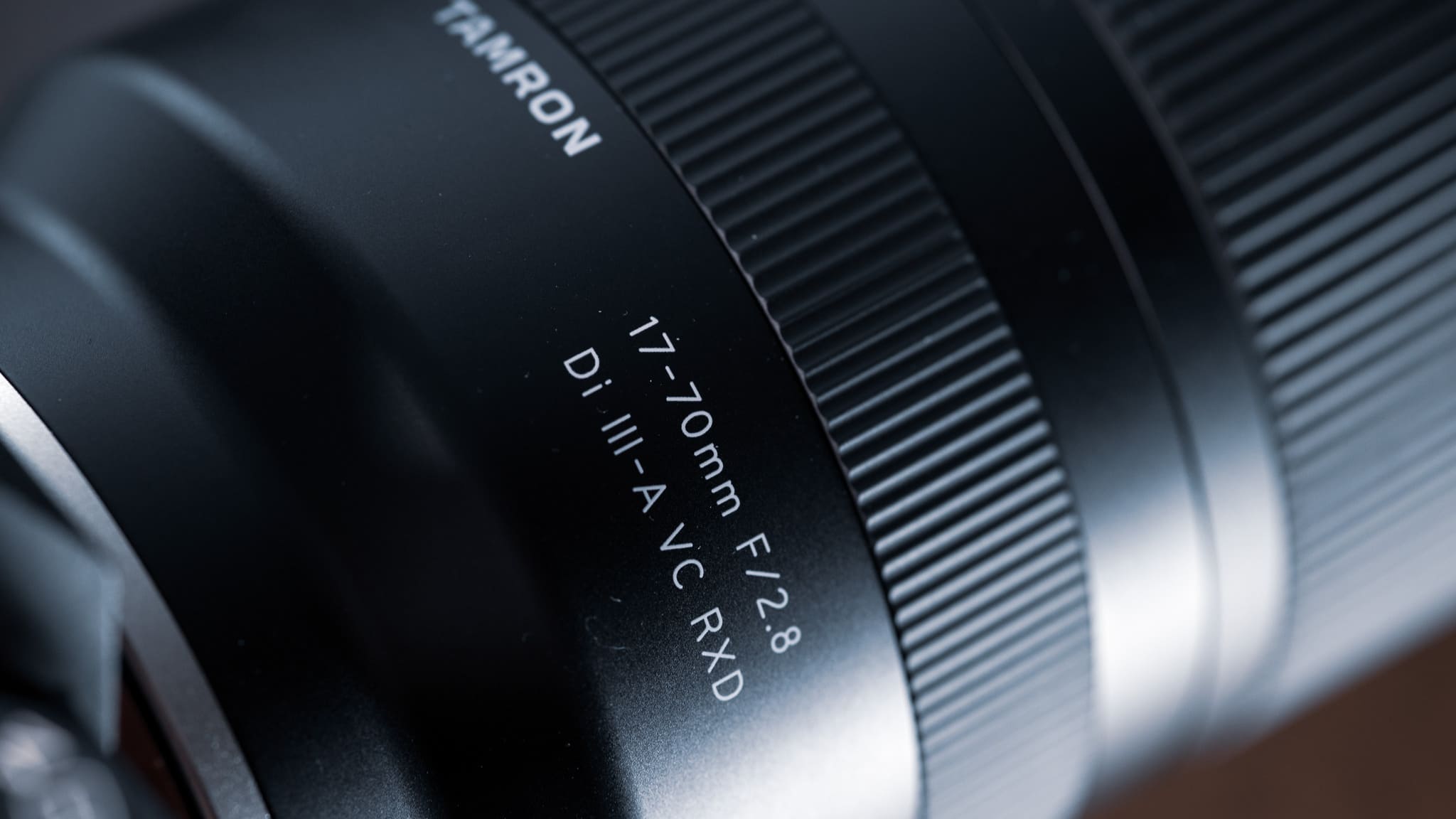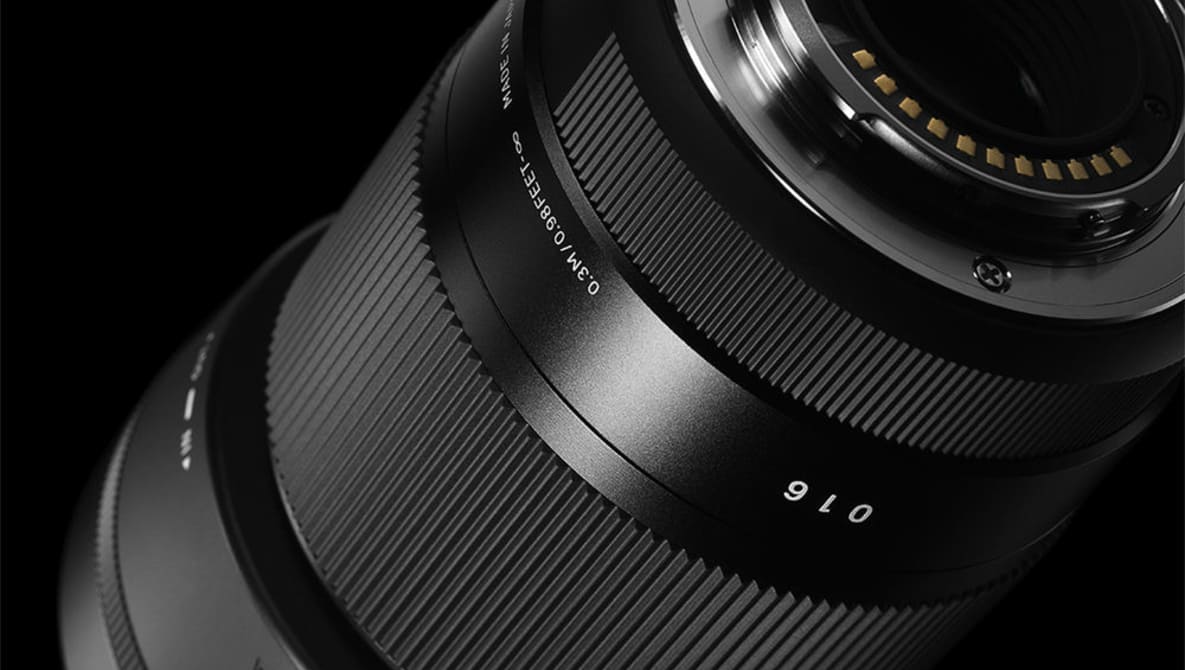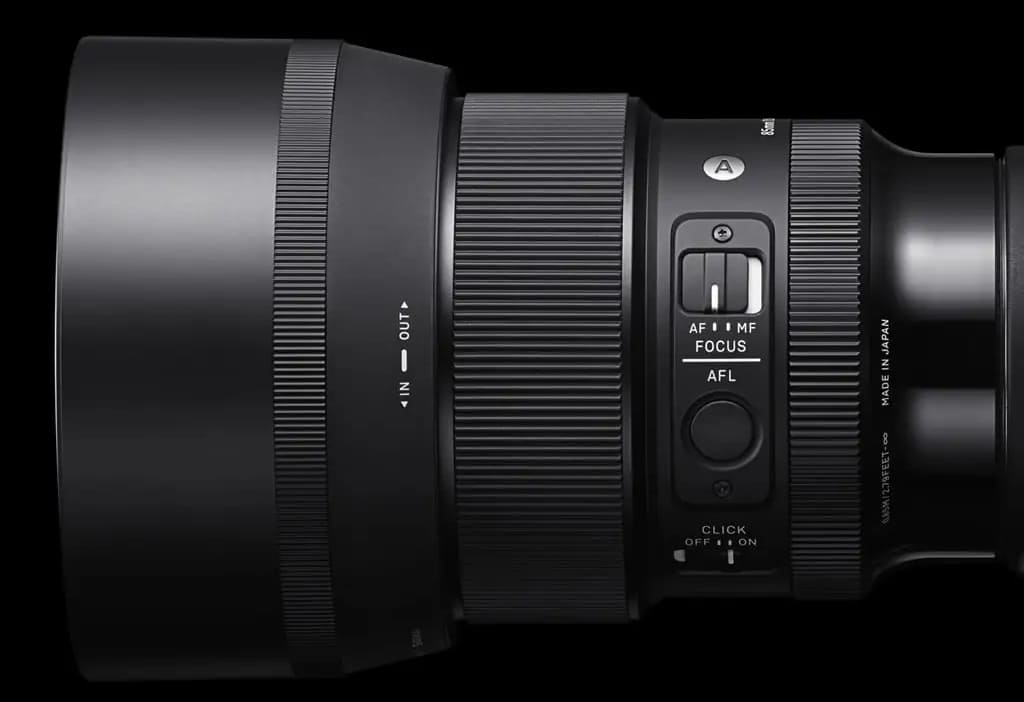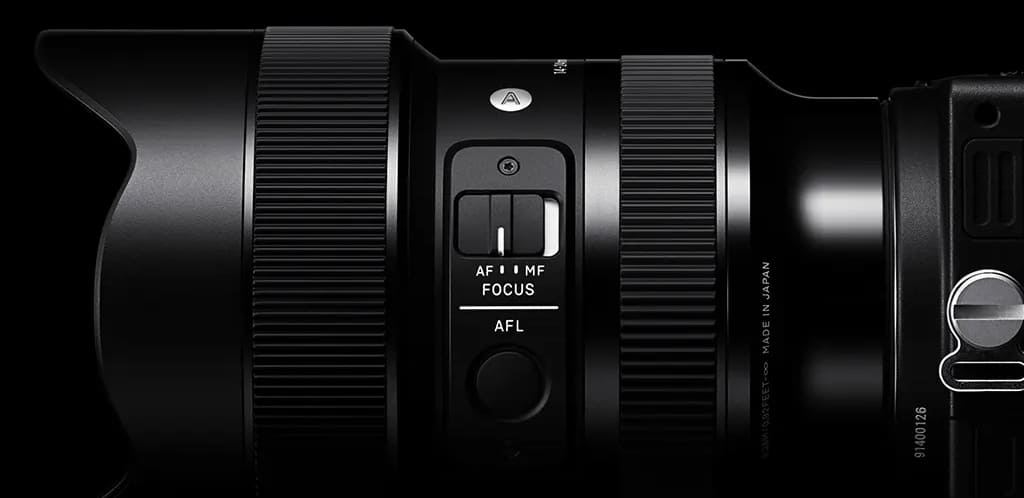Sony E-Mount Lenses Buying Guide: Top Picks for Every Photographer
Finding the right lens for your Sony mirrorless camera is like discovering the perfect travel companion: together, you can enjoy breathtaking landscapes, capture stunning portraits, and preserve life's special moments.
However, the wide range of Sony E-mount lenses can be overwhelming for first-time buyers. Should you go for a wide-angle or telephoto lens? Prime or Zoom? And what should you prioritize if you're on a budget?
Don't worry — this guide has got you covered. We'll break down different types of lenses, explain essential features, and recommend some top Sony E-mount lenses worth considering.
Ready to dive in? Whether capturing family memories or setting off on landscape and street photography adventures, keep reading to find the perfect Sony E-mount lens for your creative journey!

In this article, you will learn:
- Quick Guide to Sony E-Mount Lenses
- Sony APS-C Mirrorless Lens Recommendations
- Sony Full-Frame Mirrorless Lens Recommendations
- Conclusion
Quick Guide to Sony E-Mount Lenses
If you're new to Sony mirrorless cameras or still deciding whether to buy one, check out our Sony camera buying guide through the link below.
Further Reading:
Your Ultimate Sony Camera Buying Guide: What Is the Best Choice?
Don't know much about camera lenses? No worries! Click the link below to learn some basics before diving in.
Further Reading:
The Ultimate Camera Lens Buying Guide: Your Path to Perfect Shots
Since entering the mirrorless camera market in 2010, Sony has built one of the most extensive lens ecosystems in the world.
According to DPReview, by early 2024, there were 226 Sony E-mount lenses available. Sony itself produced 68 of these, including 45 full-frame lenses and 23 APS-C lenses. (And the lineup keeps growing!)
Here is a quick breakdown of Sony's lens naming system:
- FE Lenses: Designed for full-frame cameras but compatible with all Sony mirrorless bodies. They work perfectly on both full-frame and APS-C models.
- E Lenses: Made for APS-C cameras but can be mounted on any Sony mirrorless camera. However, when used on full-frame models, expect cropped images or heavy vignetting. For best results, stick to APS-C cameras.
Sony's original lenses include three premium series: G Master, G, and Zeiss:
- G Master (GM): This is Sony's top-tier lens series. Look for the "GM" label in the model name and a red "G" badge on the lens body. These lenses offer the best optical performance Sony has to offer.
- G Series: Positioned below the G Master series, these mid-to-high-end lenses have a "G" in their model names and a black "G" badge on the lens body.
- Zeiss (ZA): These lenses are the result of a partnership between Sony and Zeiss, covering high-end and mid-range products. They have "ZA" in the model name and feature Zeiss's iconic blue badge.

However, Sony and Zeiss seem to have stopped collaborating, so current Zeiss lenses on the market are older models from before 2017. Sony has since focused entirely on its G Master and G series lenses.
A Note on Zeiss Lenses:
The ZA lenses aren't "true" Zeiss lenses in the traditional sense. There are also pure Zeiss lenses available that don't carry the Sony brand, offering a different level of authenticity for Zeiss enthusiasts.
The strong expansion of E-mount lenses is also thanks to Sony opening up the mount protocol, attracting many lens manufacturers to offer a variety of E-mount lenses in different specifications and price ranges.
Just from SIGMA, there are 47 lenses available with E-mount versions, and with Sony's support, Tamron has released 18 E-mount lenses, many of which offer great value for their performance.
Therefore, Sony mirrorless users should not overlook the options these third-party manufacturers provide.
Sony APS-C Mirrorless Lens Recommendations
Note:
- For Sony APS-C cameras like the A6X00, A5X00, ZV-E10
- We only cover some popular and recommended lenses. Skipping a lens doesn't mean it's not good.
1. Standard Zoom Lenses for Everyday Use
Standard zoom lenses are versatile and beginner-friendly. They usually cover wide-angle to mid-telephoto ranges, making them great for capturing most everyday scenes.
We highly recommend getting one as your first lens after buying a camera.
Budget Option: Sony E PZ 16-50mm F3.5-5.6 OSS
This is the most basic and affordable APS-C zoom lens for Sony mirrorless cameras. With an equivalent focal length of 24-75mm, it's commonly included as a kit lens with models like the A6700, A6400, and ZV-E10.
Since it's not sold separately, budget-conscious buyers should consider getting it bundled with the camera body.
Travel Option: Sony E 18-135mm F3.5-5.6 OSS
This lens features a powerful zoom range (equivalent to 27-202mm), covering everything from wide-angle to telephoto. It's perfect for travel or shooting in diverse environments.
The A6700 and A6400 often come with this lens in kit bundles, while the ZV-E10 requires a separate purchase. The lens costs around $600.
Advanced Option: Tamron 17-70mm F2.8 Di III-A VC RXD (Model B070)
This is a mid-to-high-end standard zoom lens from Tamron, offering an excellent balance of focal range and a constant F2.8 aperture.
It has built-in image stabilization, good background blur capabilities, and works well in low-light conditions.
With impressive optical quality and a price tag of around $700, it delivers exceptional value and is a top choice for serious photographers.

2. Prime Lenses for Background Blur
Compared to similar zoom lenses, prime lenses are often more portable, offer better optical quality, have larger apertures, and are usually more affordable. That's why they're so popular.
However, since prime lenses have a fixed focal length, they're less versatile and require the photographer to be more creative with framing and composition.
All-Around Pick: SIGMA 30mm F1.4 DC DN
The 30mm prime lens has a full-frame equivalent of 45mm, making it a standard focal length with a natural perspective. It's great for street photography, portraits, food shots, and more.
This SIGMA lens features a fast F1.4 aperture, compact design, reasonable price, and solid optical performance. It's one of the most popular standard prime lenses for Sony E-mount cameras.
Alternatives:
- Sony E 35mm F1.8: If you prefer a first-party lens.
- Viltrox AF 33mm F1.4 E: If you want a more budget-friendly option.

3. Other Lens Options
Portrait Primes:
- SIGMA 56mm F1.4 DC DN: For top-notch image quality.
- Viltrox AF 56mm F1.4 E: A budget-friendly alternative.
Ultra-Wide for Landscapes & Architecture:
- Tamron 11-20mm F2.8 Di III-A RXD: Great value for the price.
- Sony E 10-18mm F4 OSS: Sony's first-party option.
Ultra-Wide for Vlogging/Selfies:
- Sony E 11mm F1.8: Perfect for vloggers and content creators.
Telephoto for Concerts & Wildlife:
- Sony E 55-210mm F4.5-6.3 OSS: Affordable and versatile.
- Tamron 18-300mm F3.5-6.3 Di III-A VC VXD: A highly practical all-in-one zoom.
Video:
- Sony E PZ 18-105mm F4 G OSS: With power zoom, it is great for filmmaking.
Macro:
- Sony FE 50mm F2.8 Macro: A practical choice for close-up shots.
Sony Full-Frame Mirrorless Lens Recommendations
Note:
- For cameras like the A1, A9, A7 series, and ZV-E1.
- This list includes only some of the most common and recommended lenses. If a lens isn't mentioned, it doesn't mean it's bad — just not included here.
1. Standard Zoom Lenses for Everyday Use
Budget Pick: Sony FE 28-70mm F3.5-5.6 OSS or FE 28-60mm F4-5.6
These are the two cheapest full-frame standard zoom lenses for E-mount cameras, typically bundled with full-frame bodies.
The 28-70mm, released in 2013, offers a slightly better zoom range and aperture, plus it has built-in image stabilization. The 28-60mm, released in 2020, shines in terms of optical quality and portability.
When choosing between them, we recommend going with whatever comes bundled with your camera. Older models like the A7III usually pair with the 28-70mm, while newer models like the A7C or A7CII often come with the 28-60mm.
Great Value Pick: SIGMA 28-70mm F2.8 DG DN or Tamron 28-75mm F2.8 Di III VXD G2
These two lenses offer a bigger aperture (F2.8) at a reasonable price, making them perfect for everyday shooting, portraits, product photography, and even low-light situations.
Between the two, the SIGMA is more affordable and more compact, while the Tamron excels in optical quality and zoom range. Choose based on your needs.
Top Choice: Sony FE 24-70mm F2.8 GM II
Released in 2022, this is the second generation of Sony's flagship G Master 24-70mm zoom lens, and it's the best full-frame standard zoom lens available for E-mount cameras.
Compared to the first version, the GM II is smaller, lighter, and offers improved image quality and autofocus. This lens is perfect for high-resolution cameras and those with a bigger budget.

2. Superzoom Lenses for Travel
Superzoom lenses cover a wide range of focal lengths, making them versatile for different scenes.
They are especially great for travel when you only want to carry one lens, or for users who shoot a variety of subjects and don't want to switch lenses often.
Great Value Pick: Tamron 28-200mm F2.8-5.6 Di III RXD
This is a standout superzoom lens, and it's available exclusively for Sony users. It offers an impressive zoom range of over 7x and a fast F2.8 aperture at the wide end. Despite the range and features, it's compact, lightweight, and reasonably priced.
If you ask most Sony photographers what lens to take on a trip, this would likely be their first choice.
3. Versatile Standard Prime Lenses
Full-frame standard prime lenses typically have a 50mm focal length. As mentioned earlier, these lenses are highly practical, making them perfect for beginners trying prime lenses for the first time, as well as experienced photographers who shoot a wide range of subjects.
Budget Pick: Sony FE 50mm F1.8
This is Sony's most affordable full-frame prime lens. If you want to experience the joy of a large F1.8 aperture without spending much, this is a great option to start practicing with.
If you're okay with a non-Sony brand and want slightly better image quality, you could also consider the Yongnuo YN 50mm F1.8S.
Great Value Pick: Sony Sonnar T* FE 55mm F1.8 ZA
This is a popular and well-priced Zeiss lens with excellent optical performance. It's compact, not too expensive, and has a strong resale value.
It meets the needs and budgets of most photographers and has been a top choice since its release in 2013.
Top Choice: Sony FE 50mm F1.2 GM
This is the best 50mm prime lens available for Sony E-mount cameras. It's top-of-the-line in terms of image quality, but it's pricey and heavy. Still, if you're looking for the best, this is the one to go for.
4. Medium to Long Telephoto Prime Lenses for Portraits
For professional portrait photography, lenses with a focal length between 85mm and 135mm and a wide aperture are commonly used.
These lenses help isolate the subject by blurring the background, which makes the person stand out and highlights their features.
However, this doesn't mean you always need one of these lenses for portraits. For example, if you're shooting in a small indoor space, a wide-angle lens might be a better choice.
Budget Pick: Yongnuo YN 85mm F1.8 S DF DSM
Yongnuo has really brought down the price of portrait lenses for Sony mirrorless cameras, and surprisingly, the image quality is quite decent.
While it may not outshine higher-priced lenses, it's an excellent budget-friendly option for beginners looking to try portrait photography without breaking the bank.
Great Value Pick: SIGMA Art 85mm F1.4 DG DN
This is one of the best portrait lenses for E-mount cameras in terms of image quality. It's so good that it can even compete with Sony's own G Master lenses.

5. Wide-Angle Zoom Lenses for Landscape Photography
If you're serious about learning landscape photography and want to dive into professional-level work, getting a wide-angle lens is a must.
Budget Pick: Tamron 17-28mm F2.8 Di III RXD
Ultra-wide zoom lenses are generally more expensive due to the technical challenges involved in making them, so you won't find many cheap options.
This Tamron lens is the most affordable full-frame wide-angle zoom lens for Sony E-mount cameras.
With its F2.8 aperture and solid image quality, it offers great value for the price.
Great Value Pick: SIGMA Art 14-24mm F2.8 DG DN
This lens is a prime example of getting great quality without paying a premium.
If you were to spend the same amount on a Sony lens, you'd get a lens with a smaller focal length range and possibly a smaller aperture. To get a similar lens from Sony, you'd have to pay three times the price.
You might wonder if this SIGMA lens can match Sony's own lenses in terms of image quality and build. After testing, it's clear that it still meets the high standards of SIGMA's Art series — no compromises.

6. Telephoto Zoom Lenses for News & Sports Photography
Telephoto lenses are commonly used in news photography, wildlife photography, and sports photography. In recent years, they've also become popular for events like concerts.
Due to their high price and heavy weight, prime telephoto lenses are not ideal for most people, so here we'll focus on recommending telephoto zoom lenses instead.
Budget Pick: Tamron 70-300mm F4.5-6.3 Di III RXD
This lens offers a useful zoom range, is reasonably priced, and is very portable. It's about the size of a regular travel mug, making it an excellent choice for beginners on a budget who want to try out telephoto photography.
Great Value Pick: Tamron 70-180mm F2.8 Di III VC VXD G2
This popular Tamron lens has become a favorite among Sony users, thanks to its constant F2.8 aperture.
For portrait photography, the wide aperture creates a beautiful background blur. For sports and wildlife photography, it helps maintain a low ISO when shooting at fast shutter speeds.
7. Other Options
Super Telephoto Zooms (≥400mm) for Extreme Long-Range Shooting:
- Practical Choice: Sigma 150-600mm F5-6.3 DG DN OS
- Brand Option: Sony FE 200-600mm F5.6-6.3 G OSS
Wide-Angle Primes for Portraits in Tight Spaces:
- Budget Option: Tamron 35mm F2.8 Di III OSD
- Brand Option: Sony FE 35mm F1.8
- Great Value: Sigma Art 35mm F1.4 DG DN
- Best Option: Sony FE 35mm F1.4 GM
Macro Lenses for Close-Up Photography:
- Practical Choice: Sigma Art 105mm F2.8 DG DN Macro
- Brand Option: Sony FE 90mm F2.8 Macro G OSS
Conclusion
Choosing the right camera lens for your Sony E-mount camera can make a huge difference in your photography journey. Whether you're into portraits, landscapes, travel, or video, there's a lens out there that fits your style and budget.
We hope this guide has helped you narrow down your options and find lenses that meet your creative needs. The best lens is the one that inspires you to get out and shoot!
Product Recommendation:
After choosing the right Sony E-mount lens, consider boosting your post-editing efficiency. We'd like to introduce you to TourBox, a creative console designed specifically for photographers and artists.

Similar to using a game controller for playing video games, TourBox allows you to adjust color parameters more quickly and accurately. It can even help you effortlessly perform various complex operations, significantly enhancing your work efficiency.
Whether you're retouching, color grading, or handling large batches of photos, TourBox can save you time and make your creative process smoother.

If you're interested in enhancing your post-editing experience, give TourBox a try. It will become a helpful companion in your creative journey.